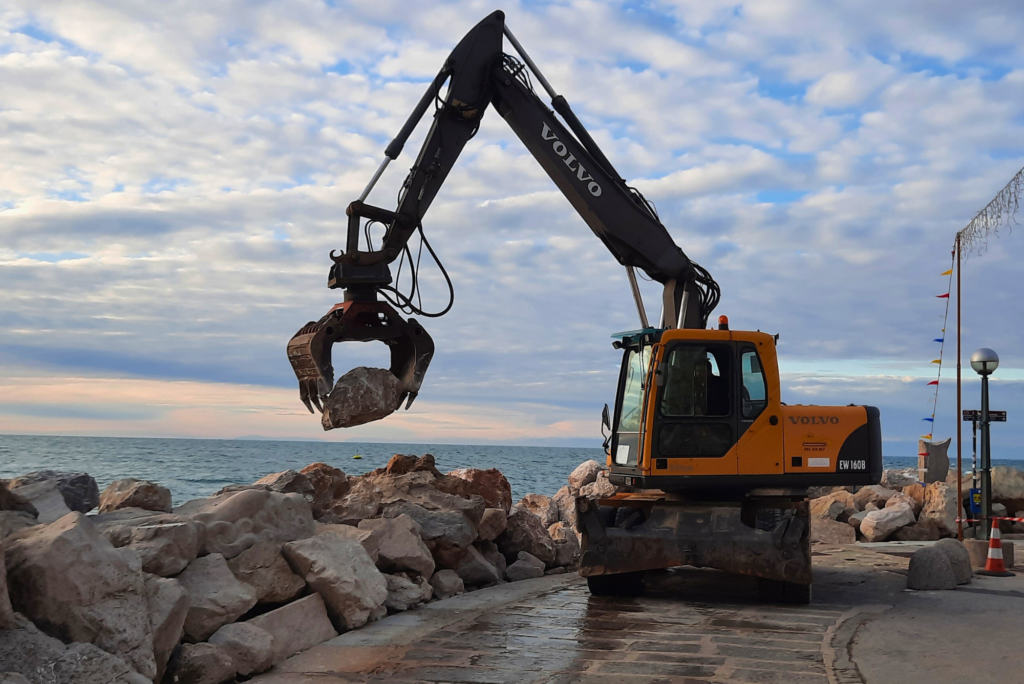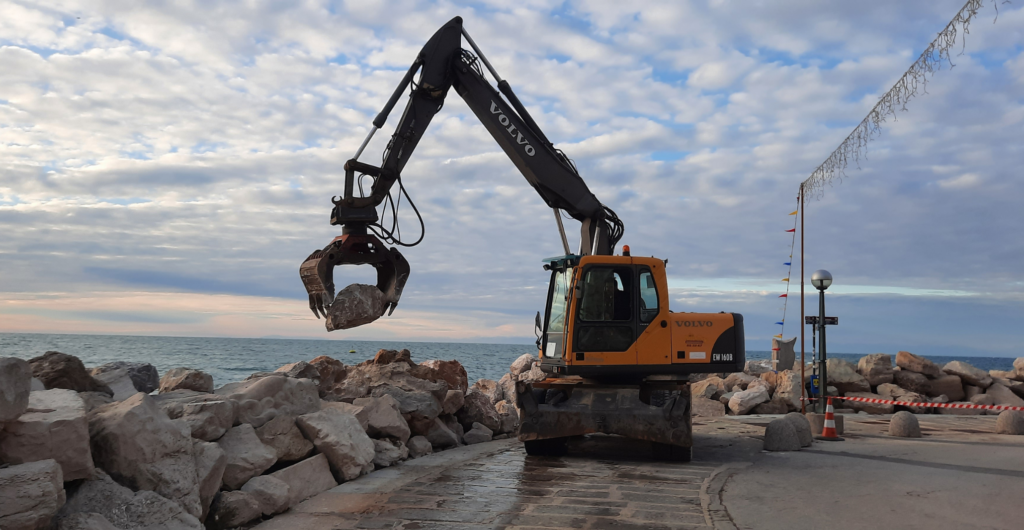Home » MedECC reports » Special Report on Climate and Environmental Coastal Risks in the Mediterranean » Chapter 4. Managing climatic and environmental risks
Special Report on Climate and Environmental Coastal Risks in the Mediterranean
Chapter 4. Managing climatic and environmental risks
The Mediterranean coastal areas are exposed to a wide range of climate and environmental risks that can lead to significant pressures on human communities and ecosystems in the region. Such present and potential future risks add to already existing multi-stressors and can have direct economic and societal consequences. Managing these risks effectively requires considering the economic, socio-cultural, institutional, and technological contexts. To address and respond to these challenges, solutions and approaches that are based on a deeper understanding of these climate and environmental risks and the socioeconomic settings, as well as concerted efforts at national and regional levels are necessary.
This chapter intends to identify and examine different responses and management approaches that are used in Mediterranean coastal areas for coping with climate change and environmental risks. It assesses the potential of existing and prospective responses, using a wide range of criteria, and presents best practices across the Mediterranean region. The chapter begins by discussing adaptation to climate risks (including climate change) and then looks at solutions to pollution and non-indigenous/invasive species issues. This is followed by possible measures to reduce potential tsunami risks, then risk synergies (compound risks), and management considerations are examined along with residual risks and barriers to effective responses. Thereafter, the important research policy interface and means to improve the uptake of research results by policymakers are considered. The chapter concludes with a number of examples of institutions in the Mediterranean (MedECC, UNEP/MAP Regional Activity Centers (RAC), Sea’ties initiative from the Ocean and Climate Platform and examples of research policy interfaces at the regional/local level policymaking in Croatia (Coastal plans Šibenik), France, and Spain (Barcelona, Catalonia).

Ongoing restoration of the protection of the old city promenade in coastal city of Portoroz (Slovenia). 2023 12 06. Credit: Piero Lionello
Executive Summary and Key Messages
Adapting to coastal flooding: except for some experiments on relocation and nature-based solutions, current coastal management typically implements high-cost engineering protection, with potential adverse impacts on coastal landscape and biodiversity and associated ecosystems (high confidence). Solutions implemented so far, such as the MOSE barrier in Venice, are addressing near-term risk and will reach soft limits during the 21st century due to ongoing sea-level rise (medium confidence). The lack of consideration of climate change and sea-level rise in coastal flood risk management creates risks of lock-ins and maladaptation in the future (high confidence) (Section 4.2.1).
Adapting to coastal erosion: the efficiency of engineering protection to prevent erosion in the Mediterranean is decreasing due to sediment scarcity in coastal areas (medium confidence). Nature-based solutions, such as protecting Posidonia meadows and their dead leaves on beaches, are receiving more attention and are increasingly implemented, but not to the scale needed to prevent current risks due to trade-offs with other aspects of coastal management such as cleaning beaches for tourism (high confidence). The implementation of nature-based solutions and relocation are limited by the lack of space and financing in many locations. Current management of coastal erosion generally takes into account future sea level rise only to a limited extent (high confidence). More transparent communication and governance that consider potential lock-ins and opportunities resulting from the ongoing transformation of Mediterranean coasts could enable adaptation to future escalating erosion risks, avoiding short-term actions that may lead to maladaptation in the future (medium confidence) (Section 4.2.2).
Managing coastal ecosystems' biodiversity loss: Mediterranean coastal ecosystems are those most threatened should regional climate change accelerate at a rapid rate due to human pressures and limited possibilities to migrate (high confidence). Many Mediterranean terrestrial, freshwater and marine coastal species and ecosystems are characterised by high rates of endemism, and some are already reaching their adaptation limits due to repeated heatwaves causing mass mortality. Rising temperatures, eutrophication, deoxygenation, acidification, sea level rise and on-going human activities, such as habitat destructions, eutrophication, and overfishing will cause further decline of ecosystems in the coming decades (high confidence). Yet, biodiversity losses can be limited by adequate conservation measures and adaptation if climate change is kept below 1.5°C with no or small overshoot (medium confidence) (Sections 4.2.3, 4.2.4, 4.2.5).
Reducing pollution: management proposed at different levels, at the source point of pollution and the receiving system, requires continued long-term monitoring, quantifying ecosystem quality using different indicators and adaptive recovery management plans (high confidence). In general, reducing pollution at the source point is more efficient than at the endpoint (high confidence). If this is not possible, in some situations, tertiary technologies (bioremediation strategies, biofiltration, use of technological innovations) offer rapid, but often costly solutions at a local scale (medium confidence). Overall, different management options for various pollution types in the Mediterranean, including solid, liquid, and gaseous waste, have been considered. They range from improving production and consumption practices and promoting eco-friendly waste management practices, accompanied by a variety of market-based instruments and legislation (Section 4.3).
Managing non-indigenous species: policies to address the risks posed by the presence of non-indigenous species include eradication initiatives, commercial exploitation and providing protected habitats for native species. All these strategies pose challenges, and their advance is not sufficiently documented. Adaptation and keeping climate change below 1.5°C (with no or small overshoot) can limit biodiversity losses (medium confidence). Implementing restrictions on fishing through large and sustained no-take protected areas can increase the resilience of ecosystems to climate change and to the expansion of non-indigenous species (medium confidence) (Section 4.4).
Managing freshwater scarcity: Observed adaptation to reduced water quality and availability often focuses on increasing water supply, e.g. through additional storage facilities (high confidence). To limit future risks of water scarcity, adaptation measures aimed at reducing demand are increasingly needed in addition to protecting or increasing water resources (high confidence). Adaptation limits will be reached above 3°C of global warming in the north-eastern Mediterranean and possibly earlier in the eastern and southern Mediterranean, with the risk of compromising autonomous adaptation by coastal populations to scarcity of terrestrial, freshwater, and brackish water resources (high confidence) (Section 4.2.4).
Enhancing science-policy interaction: engaging science in dialogue with policymakers, stakeholders, and citizens, strongly contributes to raising awareness and knowledge, as well as to building trust. The most promising opportunity for establishing science-policy dialogue is during the planning process. Turning stakeholders into partners through participation, engagement, and ownership of the plan is the best way to ensure the plan's implementation (high confidence). In addition, the process of preparing plans is a unique opportunity to establish permanent structures for science-policy interaction. Connecting these two worlds cannot happen spontaneously, without a dedicated and organised framework designed to meet the differences and to overcome barriers (Section 4.7).
Augmenting regional cooperation: regional examples (MAP, UfM, MedECC), national experiences, sub-national advisory boards, and governance network analysis results provide recommendations for potential adaptation responses. Current challenges, such as the need for more data and existing deep uncertainties, suggest adoption of phased approaches and adaptation pathways (Section 4.7.4).
How to cite the report
Contributors
Coordinating Lead Authors
Lead Authors
Contributing Authors

Cécile
Capderrey
BRGM / France
hide

Sinja
Dittmann
Leibniz Institute for Science and Mathematics Education (IPN) and Kiel University (CAU) / Germany
hide

Joaquim
Garrabou
Institute of Marine Sciences-CSIC / Spain
hide

Mauricio
González
Instituto de Hidráulica Ambiental de la Universidad de Cantabria "IHCantabria" / Spain
hide

Sebastián
Montserrat
Universitat de les Illes Balears / Spain
hide

Marie
Pettenati
Antea Group France / France
hide
BRGM / France
hide

Agustín
Sánchez-Arcilla
Universitat Politecnica de Catalunya (UPC-BarcelonaTech) / Spain
hide











